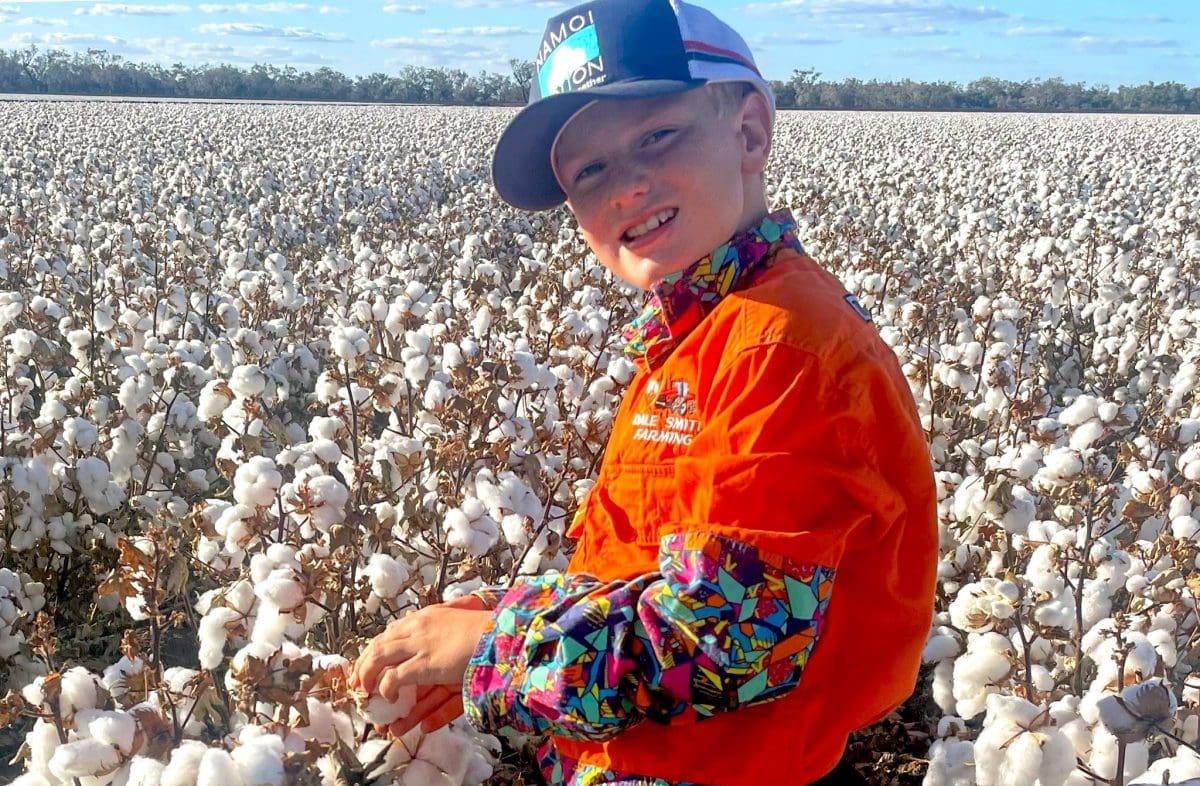
A crop inspection ahead of picking at the Smith family’s farm in the Lower Namoi. Photo: Namoi Cotton
PICKING has begun in most of Australia’s cotton-growing regions, with positive signs emerging that the flooding and farm damage late last year may not have been as devastating as first feared.
Aided by dryer and warmer conditions since Christmas, Cotton Australia is now forecasting the crop being picked at 5.2 million bales, up from around 5Mb forecast in December, both well below the 5.6Mb crop picked last year.
“This will result in around 1.2 million tonnes of fibre and 1.4 million tonnes of cottonseed,” Cotton Australia chief executive officer Adam Kay said.
While the impact of rain and flooding varied between regions, some farmers were forced to scale back their plantings, particularly in the Southern Valleys and Macquarie Valley of New South Wales, where farmers could not get on their paddocks to plant and subsequently missed their window of opportunity.
Mr Kay said with favourable conditions across most of the 65 plus local government areas growing cotton this year, growers were reassessing yield and quality.
“To appreciate where we are now you first have to acknowledge where we were.
“Last November, every inland river catchment was full or flooded from the Queensland border to Victoria and around 100 active warnings were in place.”
One area impacted by the wet weather is the Southern Valleys, where defoliation is just starting after late planting.
Wet weather at planting stage resulted in a one-third reduction in crop planted.
Progress in NSW
In the Macquarie Valley, picking has just started north of Warren after farmers reported a 30 percent crop reduction due to the well above-average rain recorded in 2022.
The upside is that quality is expected to be good, and above-average temperatures in February and March have provided very good boll-filling conditions for crops.
In the Gwydir Valley, early dryland is being picked and is yielding up to 7 bales per hectare with around double that for irrigated cotton.
Cotton not impacted by spray drift is yielding around 14b/ha and about 15pc is picked at this stage in the Gwydir.
In the Lower Namoi, around 30pc of the cotton is, and 5pc in the Upper Namoi.
Picking has just started in Walgett and Bourke with yield predictions difficult, particularly in drift-impacted areas.
In the MacIntyre Valley, 44,000ha of irrigated cotton and 8000ha dryland has been planted, with 15pc picked and activity hitting full capacity this week.
While the dryland cotton could have used some late rain, irrigated area is looking positive.
Macintyre gins have not yet started, but cotton being delivered into yards looks to be high quality.
Qld picking at pace
Picking is in full swing in St George, Dirranbandi and Mungindi with the majority of the early crop to be picked over the next two weeks and later crops a month away from picking.
Growers are reporting good yields and quality and while early indications are good, ginners are just starting so there are no results to confirm the optimistic outlook at this stage.
On the Darling Downs growers are up to the defoliation stage of the season mostly and a few have started picking the early planted fields.
Due to full storages and full water allocations at the beginning of the season, as well as a full soil moisture profile, larger than average areas were planted, around 75pc irrigated fields and 25pc rain-fed.
Gins are predicting they will start full operation in the second week of May.
In the Lockyer Valley, 10 growers have planted approximately 1500ha of cotton, up from previous years driven by price, crop rotation practices and growing conditions.
At Maryborough three growers have planted 500 ha.
In the Central Highlands, both gins are operational, and early crops are reporting up to 13b/ha irrigated.
A number of growers are still irrigating and will push through until June picking.
The Murray Darling Basin Authority reports that the major water storages in the basin are at around 90pc capacity, meaning that the outlook for the next season is positive as well.
Source: Cotton Australia

HAVE YOUR SAY